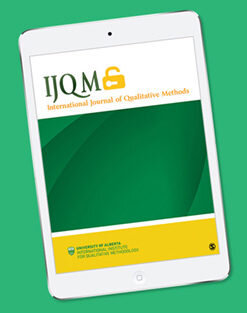Collecting Qualitative and Quantitative Data
by Janet Salmons, Ph.D., Research Community Manager for SAGE Methodspace
The Methodspace focus for Q2 of 2023 is on data collection. Researchers who use mixed methods collect both qualitative and quantitative data. In this collection of open-access you will find articles that use:
Big Data
focus groups
interviews
narratives
observations
structured dialogue and
questionnaires and surveys.
Bjerre-Nielsen, A., & Glavind, K. L. (2022). Ethnographic data in the age of big data: How to compare and combine. Big Data & Society, 9(1). https://doi.org/10.1177/20539517211069893
Abstract. Big data enables researchers to closely follow the behavior of large groups of individuals by using high-frequency digital traces. However, these digital traces often lack context, and it is not always clear what is measured. In contrast, data from ethnographic fieldwork follows a limited number of individuals but can provide the context often lacking from big data. Yet, there is an under-explored potential in combining ethnographic data with big data and other digital data sources. This paper presents ways that quantitative research designs can combine big data and ethnographic data and account for the synergies that such combinations can provide. We highlight the differences and similarities between ethnographic data and big data, focusing on the three dimensions: individuals, depth of information, and time. We outline how ethnographic data can validate big data by providing a “ground truth” and complement it by giving a “thick description.” Further, we lay out ways that analysis carried out using big data could benefit from collaboration with ethnographers, and we discuss the potential within the fields of machine learning and causal inference.
Bornakke, T., & Due, B. L. (2018). Big–Thick Blending: A method for mixing analytical insights from big and thick data sources. Big Data & Society, 5(1). https://doi.org/10.1177/2053951718765026
Abstract. Recent works have suggested an analytical complementarity in mixing big and thick data sources. These works have, however, remained as programmatic suggestions, leaving us with limited methodological inputs on how to archive such complementary integration. This article responds to this limitation by proposing a method for ‘blending’ big and thick analytical insights. The paper first develops a methodological framework based on the cognitivist linguistics terminology of ‘blending’. Two cases are then explored in which blended spaces are crafted from engaging big and thick analytical insights with each other. Through these examples, we learn how blending processes should be conducted as a rapid, iterative and collaborative effort with respect for individual expertise. Further, we demonstrate how the unique, but often overlooked, granularity of big data plays a key role in affording the blending with thick data. We conclude by suggesting four commonly appearing blending strategies that can be applied when relying upon big and thick data sources.
Doran, P., Burden, S., & Shryane, N. (2022). Integration of Narratives Into Mixed Methods Research: An Example From a Study on the Value of Social Support to Older People With Cancer. Journal of Mixed Methods Research, 16(4), 418–437. https://doi.org/10.1177/15586898211056747
Abstract. While many advances have been made mixing other methodologies with mixed methods research (MMR), there are few examples of narrative MMR or detailed procedures for integrating the narrative approach into mixed methods studies. This article contributes to the MMR field an example of integrating narratives in MMR by applying a methodological approach that is shaped by stories. The example integrated findings from cancer narratives with survey data to explore emotional support and quality of life of older people living with cancer. Integration was achieved by, firstly, following a thread through the research phases, and secondly, by using joint displays to align findings. The narrative MMR methodology presented is a tool for putting stories at the center of the research process.
Harris, J. (2022). Mixed Methods Research in Developing Country Contexts: Lessons From Field Research in Six Countries Across Africa and the Caribbean. Journal of Mixed Methods Research, 16(2), 165–182. https://doi.org/10.1177/15586898211032825
Abstract. Mixed methods research in developing countries has been increasing since the turn of the century. Given this, there is need to consolidate insights for future researchers. This article contributes to the methodological literature by exploring how cultural factors and logistical challenges in developing contexts interplay with mixed methods research design and implementation. Insights are based on the author’s research experience of using mixed methods in six projects across three African and three Caribbean countries. Three lessons are provided to aid researchers using mixed methods working in developing countries. First, cultural factors call for more reflexivity. Second, adopting a pragmatic research paradigm is necessary. And third, the research process should be iterative and adaptive.
Hewlett, L., & Werbeloff, M. (2022). Preparing public management students for mixed methods research. Teaching Public Administration, 0(0). https://doi.org/10.1177/01447394221110339 (see Methodspace interview with Dr. Werbeloff here.)
Abstract. Mixed methods approaches are increasing advocated for researching complex problems in the social sciences, but they are not widely used by postgraduate students of public management. This article describes a study where qualitative and quantitative methods lecturers worked collaboratively to design and teach both methodology courses in an integrated way to encourage public management master’s students to see the two methods as complementary, and thus possibly be more open to consider using the mixed methods approach in their research. A multi-method research design was used in this study. Students’ prior studies of qualitative and quantitative research methodology were not found to predict their summative course marks significantly on qualitative and quantitative components, respectively, but initial cognitive competence in the study of statistics correlates with summative performance in the quantitative component. Qualitative and quantitative summative scores correlate strongly, with those students with higher qualitative and higher quantitative summative scores tending to score higher on a task where they reflect on the value of both approaches to their own proposed research. However, students with lower scores, who comprise the majority of the sample, are not able to demonstrate appreciation of the possibilities or status of applying both methodologies to their own research. They tend to misunderstand foundational concepts when applied to their research design and/or show limited ability to apply their understanding to design their own work accurately or in a workable way. This study suggests that, where postgraduate students have prior limited exposure to research methods, improving the quality of student research and their engagement with mixed methods may require more mastery of both methods and methodologies than the scope and pacing of taught master’s programmes usually allow.
Magrizos, S., Kostopoulos, I., & Powers, L. (2021). Volunteer Tourism as a Transformative Experience: A Mixed Methods Empirical Study. Journal of Travel Research, 60(4), 878–895. https://doi.org/10.1177/0047287520913630
Abstract. In an effort to combine tourism with pro-social giving and personal development, more and more people choose to go abroad on volunteer tourism trips. We explore the potential transformational influence such trips have on travelers, aiming to map the transformation process stages and examine their boundary conditions. In doing so, we follow a mixed methods approach using a qualitative study comprising ethnographically informed in-depth interviews and a quantitative one, by means of a structured questionnaire. Findings indicate that the transformation process volunteer tourists undergo involves three stages related to liminality. We conceptualize the degree of liminality as immersiveness and show how the transformation process is significantly influenced by the degree of authenticity and the immersiveness of volunteer tourists’ experiences, as well as their own perceptions on how societally meaningful their actions were during their trips. Based on our conclusions, we present important implications for academics, managers, and tour operators.
Mertens, D. M. (2010). Transformative Mixed Methods Research. Qualitative Inquiry, 16(6), 469–474. https://doi.org/10.1177/1077800410364612
Abstract. Paradigms serve as metaphysical frameworks that guide researchers in the identification and clarification of their beliefs with regard to ethics, reality, knowledge, and methodology. The transformative paradigm is explained and illustrated as a framework for researchers who place a priority on social justice and the furtherance of human rights. The basic belief systems associated with this paradigm are explained and illustrated by examples of research that is commensurate with the transformative paradigm.
Portela Pruaño, A., Bernárdez Gómez, A., Marrero Galván, J. J., & Nieto Cano, J. M. (2022). Intergenerational Professional Development and Learning of Teachers: A Mixed Methods Study. International Journal of Qualitative Methods, 21. https://doi.org/10.1177/16094069221133233
Abstract. Schools, as in the case of other organizations, face complex challenges due to generational phenomena. In addition to an increasingly aging teaching workforce, schools are becoming more age-diverse, with coexisting multiple generations. Two consequences of this situation are the declining availability of relevant and critical knowledge for schools as teachers retire and the difficulties associated with maintaining professional relationships among teachers of different generations. These challenges have highlighted the significance of understanding the relevance of generations of teachers and identifying ways to build on generational diversity. Specifically, intergenerational collaboration and learning are needed to meet these challenges. Accordingly, this study aims to (1) examine generational diversity among teachers, (2) inquire into their interactions and the learning processes accompanying collaborative experiences in professional development, and (3) explore how these experiences and processes can enhance professional learning and practice. To this end, an exploratory mixed methods research project is conducted, comprising a multiphase design with two exploratory sequential studies (QUAL→quan). The participants are a sample of beginner, veteran, and retired teachers from Spain’s publicly funded schools. In the qualitative strands of the study, data collection techniques comprise focus groups and semi-structured in-depth interviews followed by thematic analysis. In the quantitative strands, questionnaires (a multidimensional scale and a survey experiment) are the major data sources, which are subjected to descriptive and inferential statistical (factor and conjoint) analyses. The focus is primarily on the qualitative strands.
Poth, C. N., & Shannon-Baker, P. (2022). State of the Methods: Leveraging Design Possibilities of Qualitatively Oriented Mixed Methods Research. International Journal of Qualitative Methods, 21. https://doi.org/10.1177/16094069221115302
Abstract. Mixed methods (MM) research has gained wide global and disciplinary acceptance. However, MM designs that prioritize qualitative perspectives are not easily recognizable yet offer great potential for researchers. By situating the current state of qualitatively oriented mixed methods (QOMM) research and offering practical guidance, we aim to help researchers leverage design possibilities. We begin by positioning ourselves and describing some distinguishing characteristics to help researchers recognize QOMM designs. We then introduce the key features of a QOMM study and weave illustrative examples into the descriptions of six interconnected design spokes to help researchers navigate a nonlinear design process. Finally, we discuss three useful lessons we learned from our own research experiences and consider their implications to help researchers design future QOMM studies.
Quinlivan, L., & Dunphy, N. (2023). A Mixed-Methods Approach to Climate Action Planning. International Journal of Qualitative Methods, 22. https://doi.org/10.1177/16094069221150107
Abstract. With global greenhouse gas emissions on the rise, the higher education sector has recognised the part it must play in reducing its carbon footprint, setting an example for others to follow in the global fight against climate change. In 2019 University College Cork undertook the complex task of designing and developing a Climate Action Plan, beginning with the compilation of a detailed inventory of the university’s greenhouse gas emissions and followed by a period of engaged research during which potential climate action measures were identified by key stakeholders. In response to the start of the Covid-19 pandemic and introduction of public health restrictions, a structured dialogue – modified Delphi – approach was employed as part of the engaged research. This mixed-methods approach proved successful at identifying a number of potential opportunities for reducing the university’s carbon footprint, with the structured dialogue method in particular offering the researchers numerous advantages for conducting engaged research during the unique circumstances arising as a result of the Covid-19 pandemic.


















